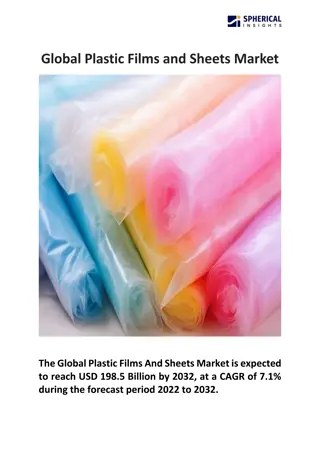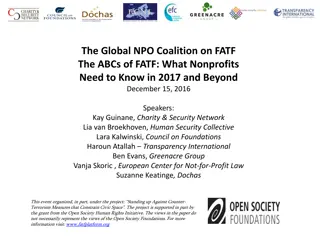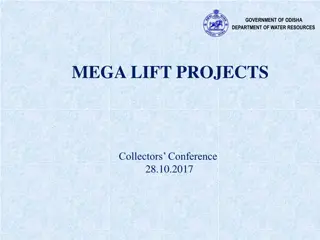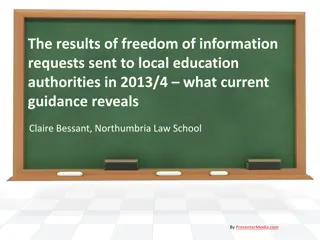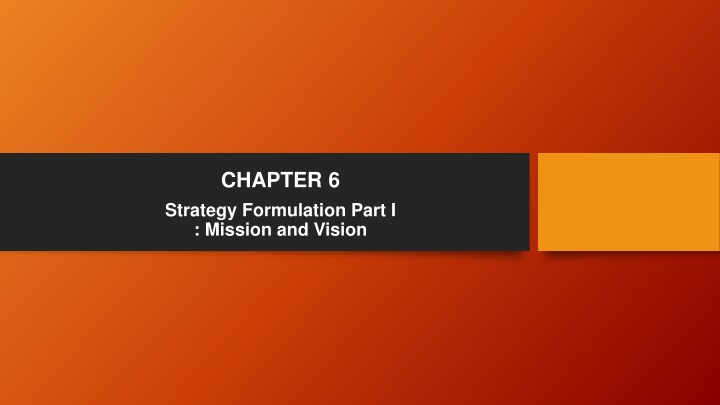
Strategic Management Processes and Environmental Analysis in Business
Explore the strategic management processes, SWOT analysis limitations, and the relationship between environmental analysis and strategic components in business using a 5-box strategy framework by Lafley & Martin. Dive into formulating winning aspirations, market positioning, winning strategies, and necessary capabilities for successful strategy implementation.
Download Presentation

Please find below an Image/Link to download the presentation.
The content on the website is provided AS IS for your information and personal use only. It may not be sold, licensed, or shared on other websites without obtaining consent from the author. If you encounter any issues during the download, it is possible that the publisher has removed the file from their server.
You are allowed to download the files provided on this website for personal or commercial use, subject to the condition that they are used lawfully. All files are the property of their respective owners.
The content on the website is provided AS IS for your information and personal use only. It may not be sold, licensed, or shared on other websites without obtaining consent from the author.
E N D
Presentation Transcript
CHAPTER 6 Strategy Formulation Part I : Mission and Vision
Steps of Strategic Management Process Ch. 4 & 5 Ch. 6, 7, & 8 Ch. 9 & 10 Ch. 11
SWOT Matrix S W WO Strategy SO Strategy (make up for weaknesses and capture opportunities) (take advantage of strengths and capture opportunities) O - joint venture, vertical integration, or unrelated diversification - M&A, Internal development ST Strategy WT Strategy T (take advantage of strengths and avoid threats) (make up for weaknesses and avoid threats) - restructuring - related diversification
Limitations of SWOT Highly subjective How the management perceives their strengths and weaknesses changes their evaluation on environmental threats and opportunities factors. Unable to produce specific strategies Framework structure only not recommended since all companies will confront all four strategic choices may result in peripheral sub-strategies Weight matters, but Not considered in SWOT does not give weight to the specific points that might be much more relevant or impactful. Recommendation Instead of deciding a strategy by integrating all factors, it is more realistic to take a step back after SWOT analysis, see the bigger picture, and execute strategies with just a few strategically crucial and decisive factors.
Strategic Processes after Environmental Analysis 5-box strategy by P&G Source: Lafley & Martin, 2013. Playing to Win. [Box 1] What is our winning aspiration? [Box 2] Where will we play? [Box 3] How will we win? [Box 4] What capabilities must be in place to implement that strategy? [Box 5] How will we execute strategy and what indicators will we use to measure strategy performance?
The Relationship between Company Environmental Analysis and Specific Strategic Components What is our winning aspiration? - Competitor Analysis - Value Proposition - Value Activities - Competitive (Business) Strategy Where will we play? - Mission - Vision - Objective How will we win in chosen markets? - External Environment Analysis (Trend, Attractiveness) - Corporate Strategy What capabilities must be in place to win? - Strategy implementation + Evaluation & control What management systems are required? - Internal Environment Analysis (Capabilities, Value Chain) Source: Lafley & Martin, 2013. Playing to Win.
Ch. 6, 7, & 8 Ch. 4 & 5 Ch. 9 & 10 Ch. 11 Winning aspiration Where will we play? How will we win? What capabilities must be in place What management systems are required?
Strategy Hierarchy The core reason why the company exists Mission The central value or objective that remains the same no matter what business is pursued Vision a special kind of dream built upon facts and information Financial Objectives Corporate Strategy Do not change frequently Competitive (Business) Strategy Functional Strategy
Vision is Our Company 2030 A special kind of dream built upon facts and information What you must do (external environment) What you want to do (of the members) Our Company Today What you can do (company s competencies and resources, strengths/weaknesses) Effective vision imaginable, desirable, feasible, focused, flexible, communicable
Effective vision Imaginable let people get a sense of what the future will be Desirable show that when accomplished, the organization, customers, investors, and most of all employees will be benefited Feasible be realistic (no pie in the sky ) Focused not be too abstract or too specific should have room for flexibility Communicable easy to convey to others
Examples of Vision Vision may be quantitative or qualitative. Become a $125 billion company by the year 2000. [Wal-Mart, 1990] Become the dominant player in commercial aircraft, and bring the world into the jet age. [Boeing, 1950] Vision may designate a certain rival. Crush Adidas. [Nike, 1960s] Yamaha Wo tsubusu! (We will crush, squash, slaughter Yamaha!) [Honda, 1970s] Vision may designate successful companies of other industries. Become the Nike of the cycling industry. [Giro Sport Design, 1986] Become the Harvard of the West. [Stanford University, 1940s] Vision may include internal transformation. Become number one or two in every market we serve and revolutionize this company to have the speed and agility of a small enterprise. [GE, 1980s]
Company A vs. Company B (A) Our vision serves as the framework for our Roadmap and guides every aspect of our business by describing what we need to accomplish in order to continue achieving sustainable, quality growth. (B) At , we're committed to achieving business and financial success while leaving a positive imprint on society delivering what we call Performance with Purpose. In practice, Performance with Purpose means providing a wide range of foods and beverages from treats to healthy eats; finding innovative ways to minimize our impact on the environment and reduce our operating costs; providing a safe and inclusive workplace for our employees globally; and respecting, supporting and investing in the local communities where we operate. Wherever we do business, Performance with Purpose is our guide. We believe that delivering for our consumers and customers, protecting the environment, sourcing with integrity and investing in our employees are not simply good things to do, but that these actions fuel our returns and position for long-term, sustainable growth - People: Be a great place to work where people are inspired to be the best they can be. - Portfolio: Bring to the world a portfolio of quality beverage brands that anticipate and satisfy people's desires and needs. - Partners: Nurture a winning network of customers and suppliers, together we create mutual, enduring value. - Planet: Be a responsible citizen that makes a difference by helping build and support sustainable communities - Profit: Maximize long-term return to shareowners while being mindful of our overall responsibilities. - Productivity: Be a highly effective, lean and fast-moving organization. Effective vision imaginable, desirable, feasible, focused, flexible, communicable
Mission Be the best employer for our people in each community around the world and deliver operational excellence to our customers in each of our restaurants Vision Be the world best quick service restaurant
Tesla Our mission is to accelerate the world s transition to sustainable energy Our vision is to create the most compelling car company of the 21st century by driving the world s transition to electric vehicles
Three questions on Ch. 6 1. What is a SWOT analysis and its limitations? 2. What is the strategy hierarchy? 3. What is the definition of vision? What should be considered when developing an effective vision?
Practice guidelines Remember that vision is a special kind of DREAM built upon FACTS and INFORMATION. Therefore, it should reflect personal values. It should be inspirational and make you excited and hopeful. It should be specific and not vague. 1. You can start building your personal vision by writing down the words that represent you; that will represent you; that you would want to represent you [a~z]:
A N B O C P D Q E R F S G T H U I V J W K X L Y M Z
2. And, try to set specific goals in each of your lifes categories Occupation Family Economy Social Health Others
3. Now, combine all of the above and compose your vision into several sentences. It should start with, for example, By November 17, 2027 [date of your choice], I will be By November 17, 2027 [date of your choice], I will be .
My 5-box Strategy What is my winning aspiration? 1 2 Where will I play? How will I win in chosen markets? 3 What capabilities must be in place to win? 4 What management systems are required? 5
Schedule Writing an individual vision statement: 30 minutes Question # from 1 to 3 Sharing your vision with team members: 15 minutes Declaring your vision to all students : 15 minutes Only for volunteers


